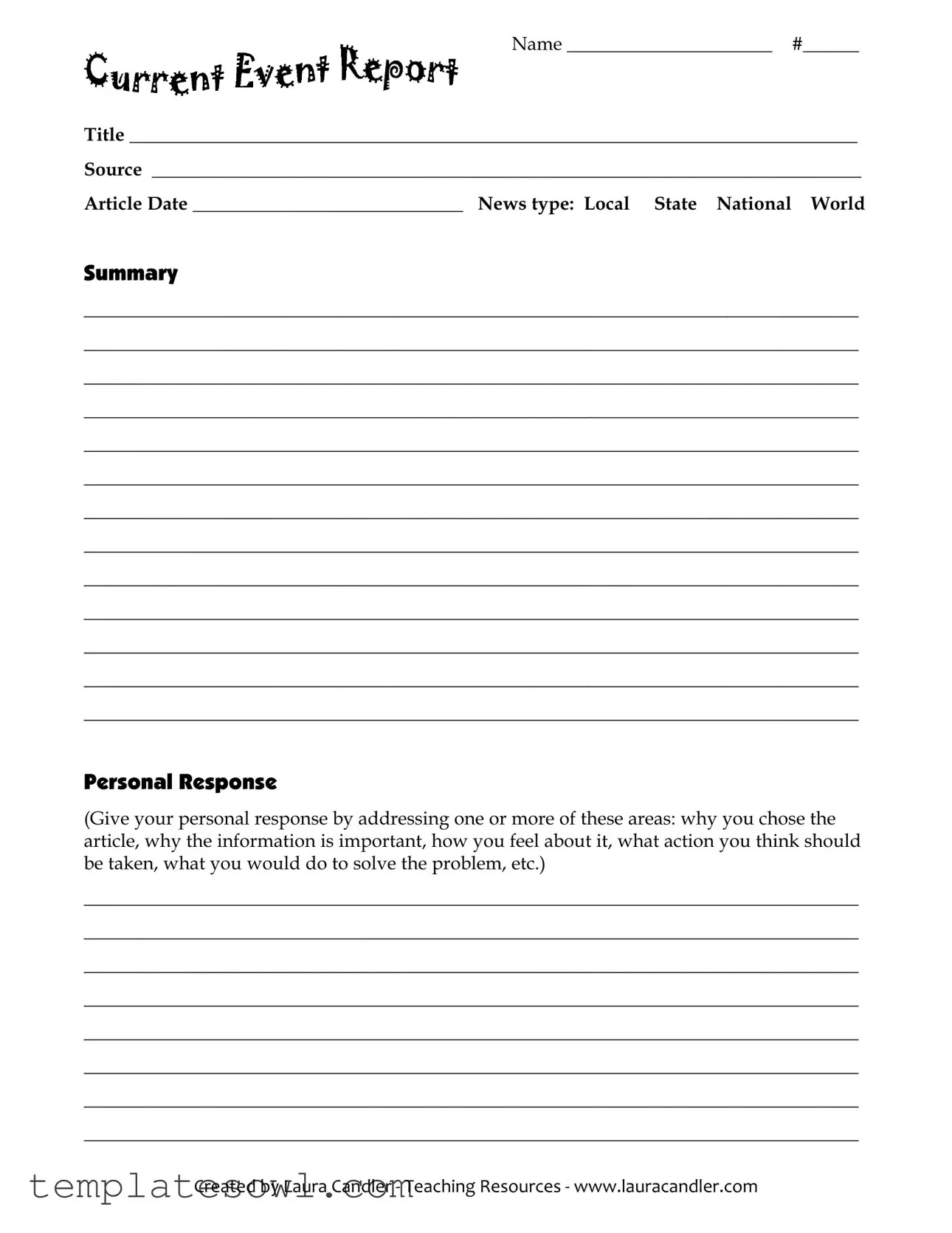Name ______________________ #______
Title ______________________________________________________________________________
Source ____________________________________________________________________________
Article Date _____________________________ News type: Local State National World
Summary
___________________________________________________________________________________
___________________________________________________________________________________
___________________________________________________________________________________
___________________________________________________________________________________
___________________________________________________________________________________
___________________________________________________________________________________
___________________________________________________________________________________
___________________________________________________________________________________
___________________________________________________________________________________
___________________________________________________________________________________
___________________________________________________________________________________
___________________________________________________________________________________
___________________________________________________________________________________
Personal Response
(Give your personal response by addressing one or more of these areas: why you chose the article, why the information is important, how you feel about it, what action you think should be taken, what you would do to solve the problem, etc.)
___________________________________________________________________________________
___________________________________________________________________________________
___________________________________________________________________________________
___________________________________________________________________________________
___________________________________________________________________________________
___________________________________________________________________________________
___________________________________________________________________________________
___________________________________________________________________________________

